Monday, October 16, 2023. Annette’s News Roundup.
I think the Roundup makes people feel not so alone.
To read an article excerpted in this Roundup, click on its blue title. Each “blue” article is hyperlinked so you can read the whole article.
Please feel free to share.
Invite at least one other person to subscribe today! https://buttondown.email/AnnettesNewsRoundup
________________________________
When I put together this Roundup, it was Sunday.
I listened to Secretary of State Antony Blinken and National Security Advisor Jake Sullivan review the barbaric Hamas attack - the continued Hamas rockets thrown at Tel Aviv - and the booby traps greeting Israeli soldiers in Gaza (where we hope against hope that Israel will succeed at limiting civilian casualties.)
Yes, I thought. War is hell.
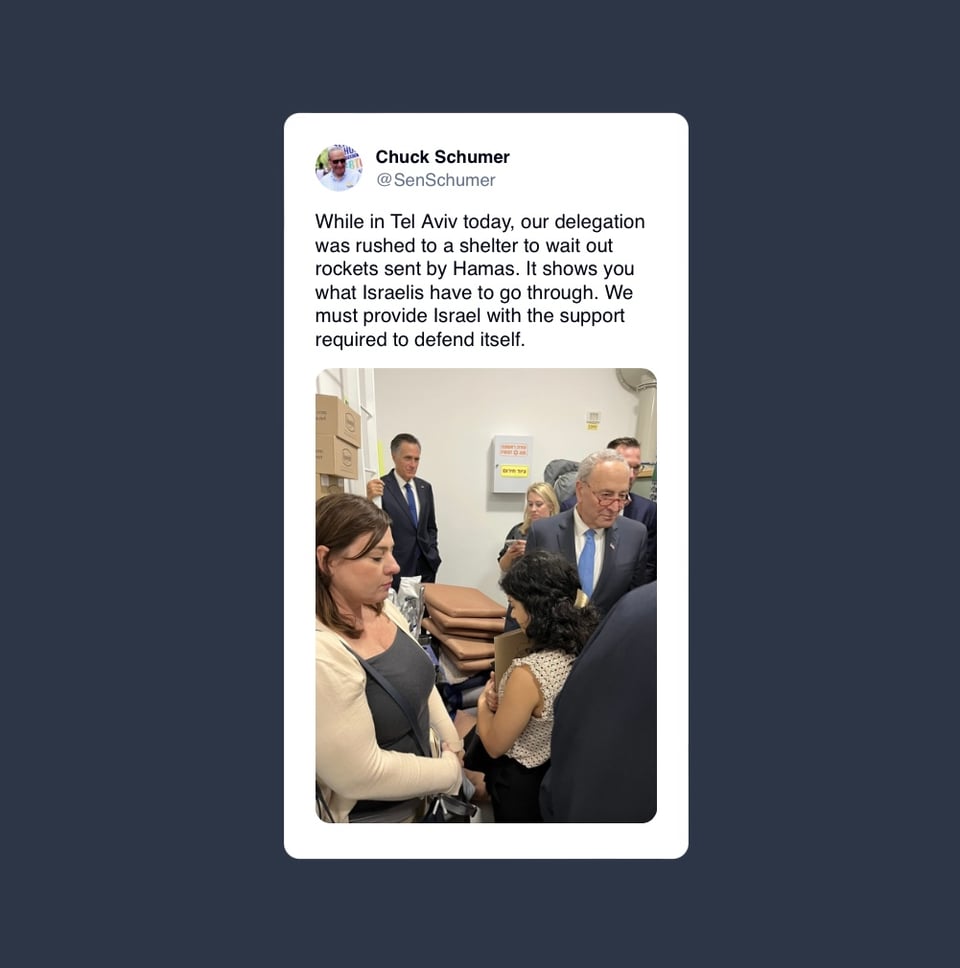
Then, I came upon the article below. It lifted my spirits. Music. Talent. Ethnicity, even uniqueness as a virtue, not a disability.
I thought you might enjoy it too.
The Roundup salutes Barbra.
The week begins.
________________________________
Malibu Barbra: Inside Barbra Streisand’s World.

A previously unpublished photograph of Barbra Streisand, by Richard Avedon, photographed on April 1, 1970. Hair by Anna Gallant; styled by Polly Mellen. With special thanks to the Richard Avedon Foundation.
On the eve of her memoir, the legend invites VF to her home to talk music, dogs, pickup lines, and the movies she still wants to make.

Barbra Streisand posed for Richard Avedon for this previously unpublished image on April 1, 1970. She was styled by Polly Mellen.COPYRIGHT © THE RICHARD AVEDON FOUNDATION.
“This is the opening of a film about Sarah Bernhardt, if I could get anyone to do it,” she says, drawing her hand through the air. “You start on a mirror, and the hand comes in the frame, and someone is trying to put on the eyeliner and it’s smudging. You have to erase it and start again. You don’t even know who it is.”
We’ve been talking about makeup. For most of her career—from her nightclub gigs when she was 18 right through to her major films—Barbra Streisand did her own. At first because there was no one else to do it, and then because no one could do it better. In her autobiography, My Name Is Barbra, out November 7, she tells the story of her film test for Funny Girl. The makeup people came to attend to her, and she thought, “Great, they’re the experts. Let’s see what they can do.” But she didn’t love the result. “I said, ‘Thank you very much,’ ” Streisand writes, “but then I asked, ‘Would it be all right if we also did a test with just me making myself up?’ The studio said, ‘Fine.’ ”
The cinematographer picked Streisand’s.
Streisand is 81 now, and though her hands remain steady, she finds it harder to achieve that straight line across the eyelid. That’s the genesis of the Sarah Bernhardt idea—Bernhardt at an older age, still potent, still inimitable. “You know, she played Juliet when she was 74,” she says.
I am at Streisand’s house in Malibu in July, two days before the Screen Actors Guild declares a strike, to talk to her about her book. I’m one of only a handful of people who’ve read it at this point.
My Name Is Barbra is 992 pages of startling honesty and self-reflection, deadpan parenthetical asides (including a running bit about how much she loves going to the dentist), encyclopedic recall of onstage outfits, and rigorous analyses of her films, many of which she rewatched for the first time in decades.
There’s the chilling story, which she’s never told before, of the origins of her legendary stage fright. There’s her hilarious opening line to James Brolin, who she’s been with for 27 years. There’s a page and a half correcting the record on the Streisand Effect, a term that refers to the way efforts to minimize a story can backfire, generating exponentially more press; it derives from legal action she took against a person who publicized the location of her home. (More on all this later.) There’s no index, so would-be browsers can’t cheat. A genius move—was it her choice? She laughs. Absolutely. If she could plug away for 10 years writing this exhaustive, exhilarating account of her life—leaving blood on the page, per her editor’s request—then we can do her the courtesy of reading it from start to finish.
In 1984, Jackie Onassis, then an editor at Doubleday, invited Streisand to write a memoir. She turned the offer down: “Frankly, I thought at 42 I was too young, with much more work still to come.” (She wasn’t wrong, but for those keeping score, she had already won an honorary Tony, two Oscars, one Emmy, and seven Grammys.) Still, she started making notes, and in 1999 began keeping a journal, longhand. “I never learned to type,” she says, an act of defiance against her mother, who wanted her to pursue a career in school administration so that she’d have summers off. Instead, Streisand grew out her nails, precluding secretarial work, and—just to put a point on it—became a supernova.

She tells the story of her film test for Funny Girl. The makeup people came to attend to her, and she thought, “Great, they’re the experts. Let’s see what they can do.” But she didn’t love the result. “I said, ‘Thank you very much,’ ” Streisand writes, “but then I asked, ‘Would it be all right if we also did a test with just me making myself up?’ The studio said, ‘Fine.’ ” The cinematographer picked Streisand’s.
Even so, the only reason we have My Name Is Barbra, she tells me, is because she got stonewalled on two movies she wanted to make. Not the Bernhardt one, that’s a new idea. No, one was a movie about the photographer Margaret Bourke-White, based on a script she’d been developing since 1984. The other one was Gypsy. “I had the concept, you know? Frame by frame. How the songs should be done.” Sondheim told her she could either direct or act in it, but not both. “I said to him, You didn’t like Yentl? He said no, I liked Yentl. I liked Yentl. But this is more difficult a part.”
She is supremely confident in her abilities and instincts, but she also tells me that she believes both her good reviews and her bad ones because, as she says, “I’m not completely sure that what I do is so great.”
Being with Barbra Streisand is a heightened experience. She comes prepared, carrying a folder with my name on it. She looks chic and comfortable wearing black pants and a gauzy top. We sit in her living room, the Pacific Ocean over her shoulder, and share a three-tiered tray of tea sandwiches and drink enormous cups of tea. Throughout our conversation she exhorts me to please eat, because she is eating, which she claims makes it easier to talk about herself. So we eat. At one point her three dogs come by for a visit. Two of them, Violet and Scarlet, are biological clones of Streisand’s beloved Sammie, a Coton de Tulear who died in 2017. Violet, despite allegedly being the well-mannered one, steals an egg sandwich.
Streisand’s speaking voice is a dream—she enunciates precisely but never sounds stagey. She is determined to answer my questions thoroughly, and she is also vocal about the fact that her train of thought occasionally takes the long route, which is how we get on the topics of copy editors gunning for proper use of the past perfect tense (those are my words; her words were “I’m from Brooklyn, I’m not some English major”), Francis Bacon, waterwheels, the ideal spacing between ellipses, and her theory of cavemen, which explains why men try to keep women down.

Streisand in her fifth TV special, in 1973.

At work in the recording studio in 1965.

On the set of Yentl, which she directed while also playing the lead.

Her first demo recording, from 1961.

With Steve McQueen, Paul Newman, and Sidney Poitier of First Artists production company in 1972.
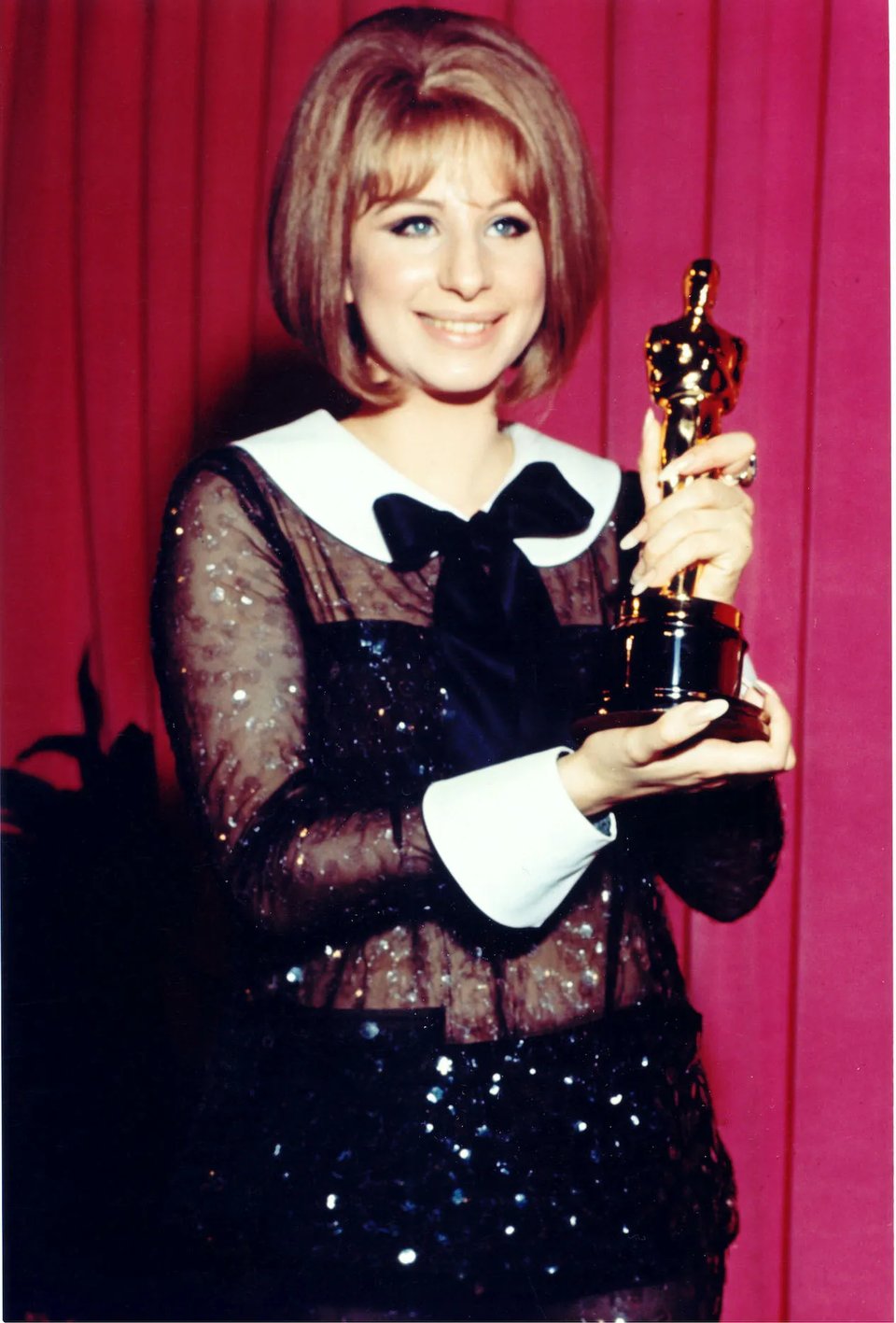
An Oscar for Funny Girl.

In The Belle of 14th Street, a musical for CBS, in 1967.

Groucho Marx visiting the set of The Way We Were.

Performing at the Barclays Center in her native Brooklyn in 2012.
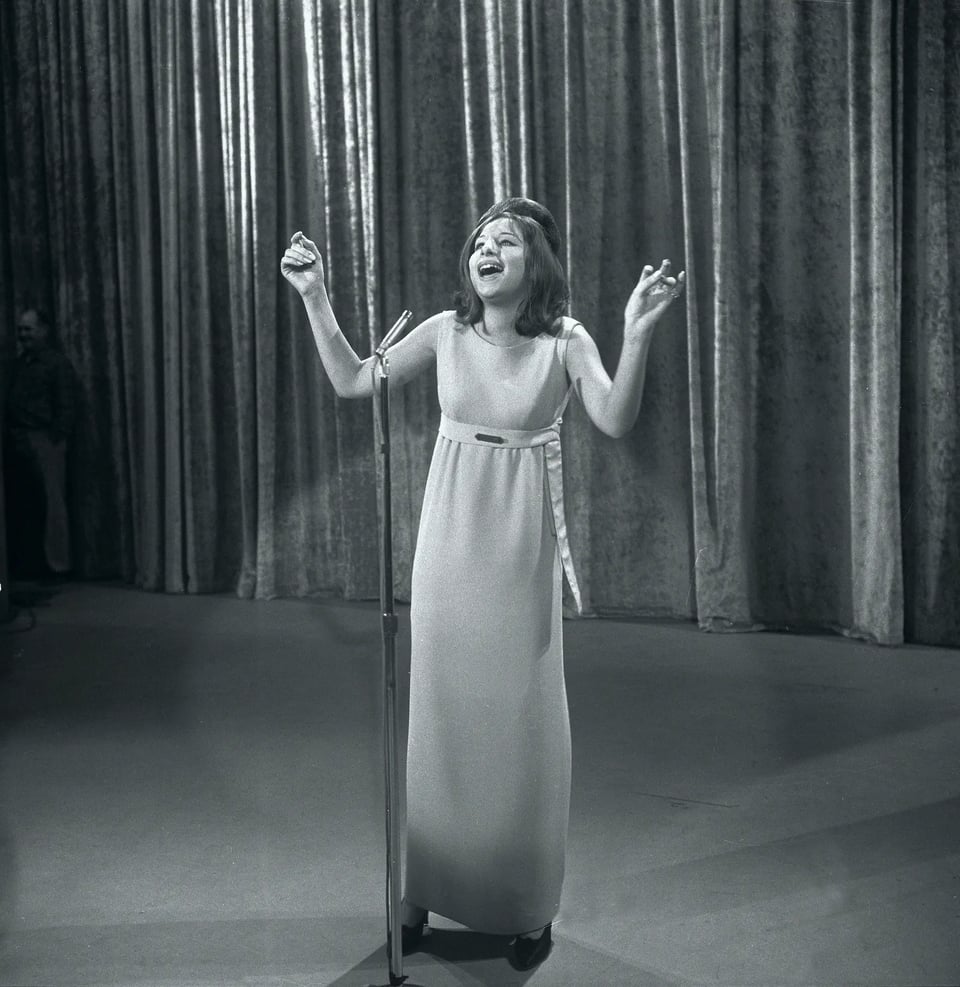
On Ed Sullivan in 1962.

In Yentl in 1983.
Mind you, it was all relevant to our larger conversation about her life and work, and to My Name Is Barbra, which is at once a vital account of an American icon and a deeply personal and dishy stream of consciousness. Even when we are back in Flatbush with young Streisand, narrator Barbra doesn’t hesitate to jump in, just as she would in person, ad-libbing, digressing, finessing. It’s singularly entertaining, energetic, and, best of all, it sounds just like her.
In the chapter called “Brando,” for example, we discover not only that Marlon Brando propositioned Streisand at a party in 1966 (he said, “I’d like to fuck you,” with his wife in the adjoining room) and that she turned him down but they became lifelong friends and phone pals, but also that her favorite ice cream is McConnell’s Brazilian Coffee in Santa Barbara, which is so good that sometimes she and Jim (that’s James Brolin to you and me) will drive up there just to get it—oh, and can you believe that after Brando saw the film of Funny Girl he called Barbra up to deliver this critique: “You were really good, but you run funny”?
In 1984, Jackie Onassis invited Streisand to write a memoir. She turned the offer down: “Frankly, I thought at 42 I was too young, with much more work still to come.” For those keeping score, she had already won an honorary Tony, two Oscars, one Emmy, and seven Grammys.
I observe that this is one of the wilder chapters I’ve ever encountered in literature, and she says, “Well, he’s Marlon Brando!” True. And also, she’s Barbra Streisand.
Loss and persistence have been the twin engines of Streisand’s career. Her father died when she was 15 months old. Her mother, who had a beautiful voice but never pursued singing professionally, was impossible to please. At age 13, Barbara (she would drop the middle a five years later, to make it unique) knew she wanted to be a famous actor. Music wasn’t on her radar: “Nobody in high school was particularly impressed with my voice,” she writes, “and neither was I.” Nevertheless, as she held down menial jobs (stuffing envelopes, ushering at theaters) to fund her study of acting after graduation, it was singing that gave her her first big break. Specifically the song “A Sleepin’ Bee,” which she sang at a talent competition. She won, paving the way for her first professional engagement, at age 18: a two-week contract at a club on Eighth Street called the Bon Soir.
She was an immediate hit, but typically for Streisand, success didn’t quite register as such. “I had never even been in a nightclub until I sang in one,” she writes. “What was I doing here? I was supposed to be onstage, playing Juliet.” Her vexed relationship with achievement underlies both the book and our conversation. She is supremely confident in her abilities and instincts, especially as a director—“I see everything as a movie,” she says—but she also tells me, without a trace of false modesty, that she believes both her good reviews and her bad ones because, as she says, “I’m not completely sure that what I do is so great.” It’s not that the negative reviews don’t sting; they do. It’s more that ultimately, she is her own harshest critic. What she values about art is process—not perfection, believe it or not, and certainly not completion. She never listens to her albums or watches her movies because, as she says, “I always see something to change.” When I ask if she thinks she is too hard on herself, or whether that’s what propels her forward, she says, “I wouldn’t say too hard on myself.” And then: “I am very hard on myself.”

A duet on The Judy Garland Show in 1963.

Directing 1991’s The Prince of Tides.

An Emmy for her 1965 TV special, My Name Is Barbra.
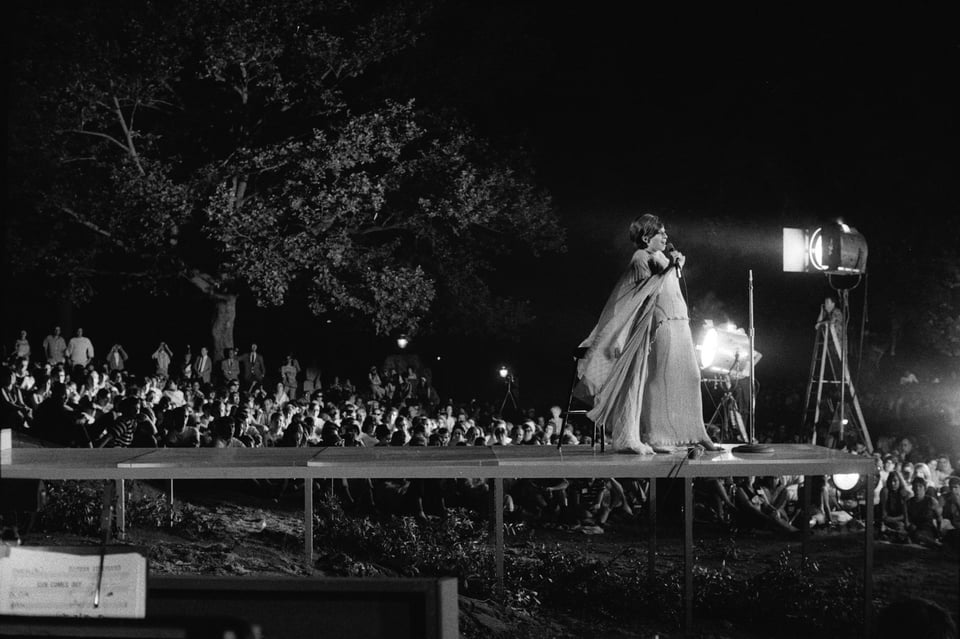
In concert in Central Park in 1967.

With David Selby in Up the Sandbox, a movie from 1972.

Performing in an Arizona football stadium in 1976’s A Star Is Born.

Recording “You Don’t Bring Me Flowers” with Neil Diamond in 1978.
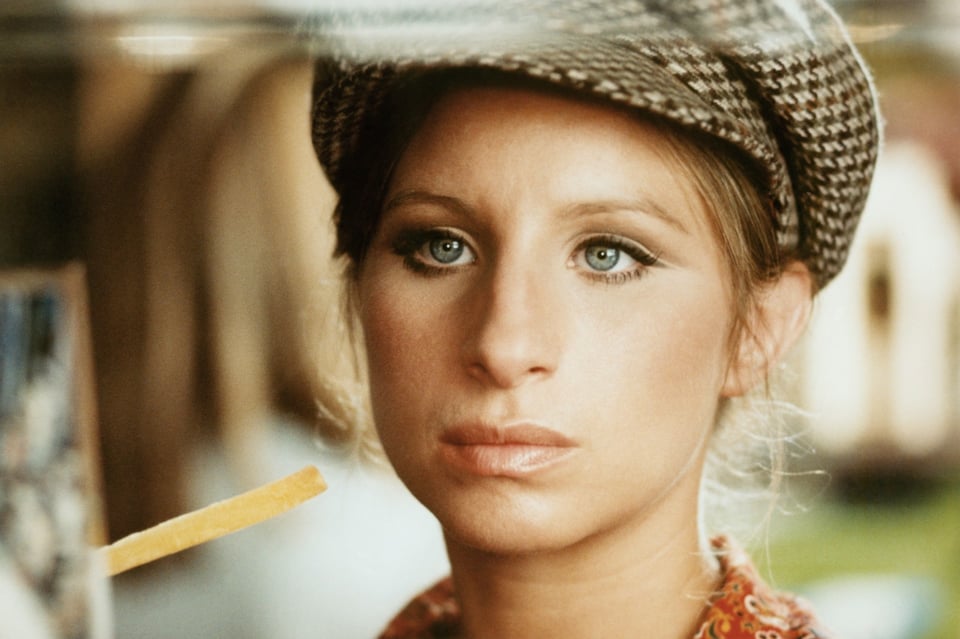
In 1972’s What’s Up, Doc?

Taping a scene for her special in 1965.
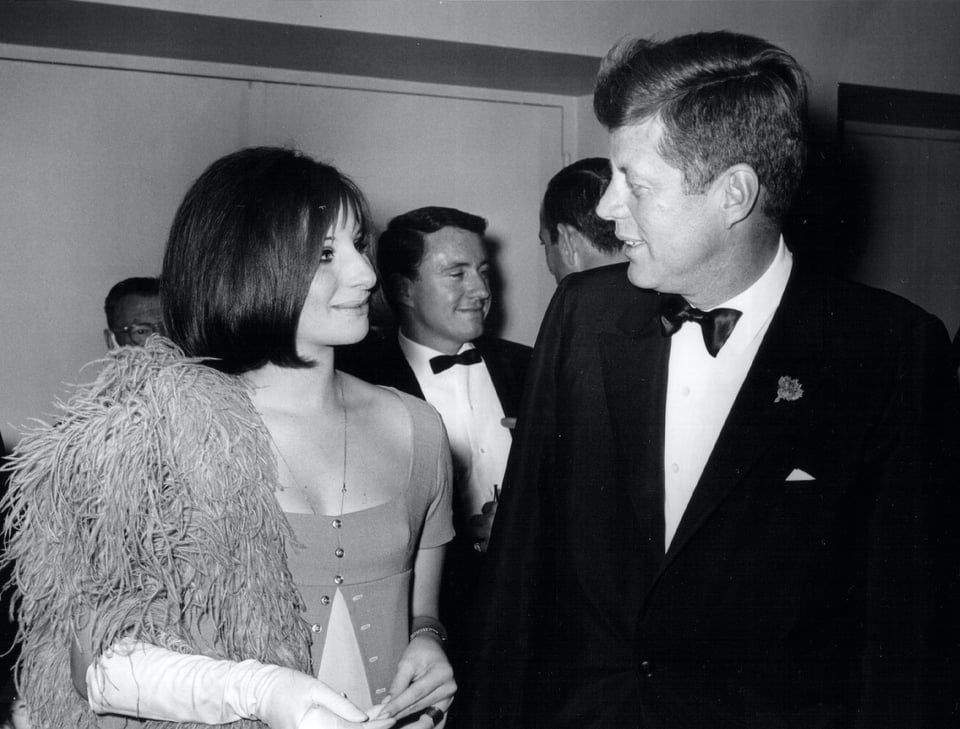
A moment with JFK in 1963.

A song of the year Grammy for “Evergreen” in 1977; she tied with Debby Boone’s “You Light Up My Life.”
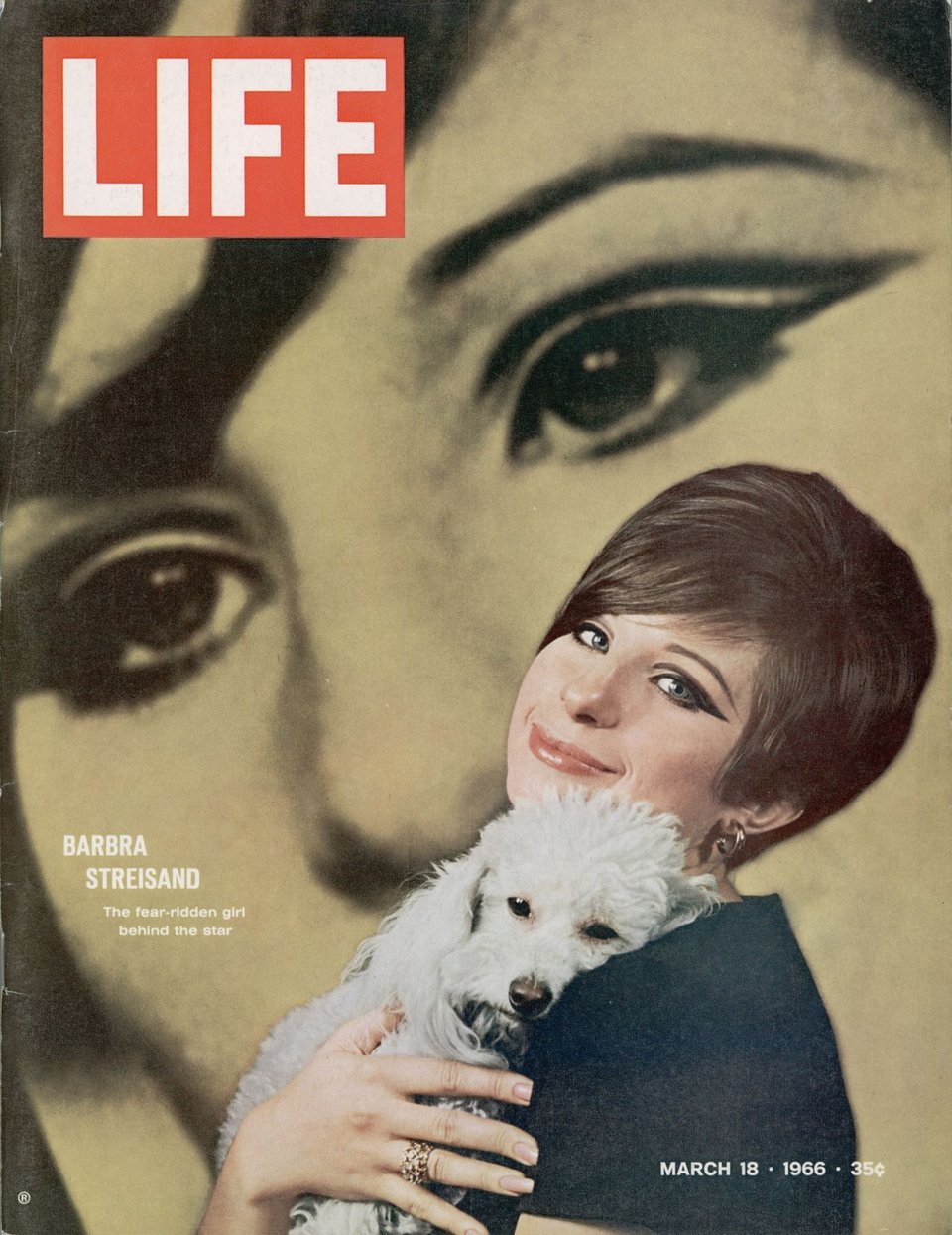
On the cover of Life in 1966.
The memoir draws its power from these contradictions: Streisand’s stratospheric rise coupled with her inability to be satisfied; her countless awards set against the fact that she still couldn’t get the greenlight to play Mama Rose in Gypsy, which drives her nuts. (For evidence that even the most proven talent in Hollywood requires superhuman tenacity to get projects over the line, I refer you to her chapters on making Yentl.) To the extent that Streisand values fame, it’s not about a desire to be recognized or fulfilled by an audience. “I don’t think of myself as a movie star,” she says. Fame for her is a means to an end. Often, those ends are highly relatable. In the book, she recalls a moment in her third-floor walk-up on West 48th Street, at a time when she was earning $55 a week working for a press firm and eating at the Automat. She loved clean sheets and a freshly made bed but couldn’t get the knack of hospital corners. “I have a vivid memory of standing in the doorway of the bedroom,” she writes, “looking at the rumpled sheets, and thinking, I have to become famous just so I can get somebody else to make my bed.” The only time she brings up her own celebrity in our conversation—brings it up as a source of unalloyed joy, I mean—is when I ask her how she came to have a rose named after her. “Because I’m famous!” she exclaims.
Indeed, she got so famous so early and has stayed famous so long that over the course of seven decades in show business, she has met, worked with, or otherwise crossed paths with virtually everyone, from Princess Margaret to Prince. It’s probably for the best that My Name Is Barbra doesn’t have an index, because it wouldn’t be fair to all the other indexes. Presidents? She has sung for Democratic commanders in chief all the way back to John F. Kennedy. Prime ministers? She dated Pierre Trudeau when she was 27 and he was 50 (she describes him as “an elegant man who was still enough of a free spirit to wear sandals to Parliament”). Hollywood paramours? Ryan O’Neal and Don Johnson, check. Nobel laureate.
There are also moments that are highly Streisand-specific. For example, you may be curious to know her take on the Streisand Effect: “When I first heard the term, I naively thought, Is that about the effect of my music? Little did I know.” She writes that she didn’t intend to try to remove the picture of her house, she just didn’t want her name to be publicized with it, for security reasons.
On cloning, a topic on which precious few people can offer testimonials, she notes, “You can clone the look of a dog but you can’t clone the soul.” To clarify, she doesn’t regard that as a bad thing. (I can confirm that the dogs are their own individual doggy selves and also adorable.)
That zinger I mentioned earlier—her opening gambit to Brolin? It was: “Who fucked up your hair?” He had just had it buzzed, for a part. He took no offense, they hung out all evening, and they’ve been together since. She tells me what a wonderful listener he is, that he comes to every one of her concerts and never gets bored, that he’s never placed himself in competition with her work. In the book, committed to her bit about the dentist, she cops to another reason for marrying him: “He has great teeth.”
And as for her stage fright’s origin story: She was doing Funny Girl on Broadway opposite Sydney Chaplin (Charlie’s son), and they had what she refers to as a “flirtation,” but she felt guilty (she was married to Elliott Gould at the time) and put a stop to it. Chaplin was angry. Onstage, every night, he began cursing and jeering at her, so quietly that no one but Streisand could hear him. Her costar had become her nemesis. It made her physically sick and threw her concentration. She went through with the rest of the production and made good on her commitment to open the show in London. But she never did Broadway again.

She was only 19 but already a force: She insisted on performing her character’s signature song while rolling around stage in an office chair, because she thought it would be funnier. “Apparently most young women, given their first part in a Broadway show, do not challenge the director. They feel lucky enough just to be there,” she writes. “That was not me.”
Funny Girl, of course, came back to Broadway last year. I ask her if she followed any of the drama around the casting of Fanny Brice and whether she’s seen Lea Michele’s performance. She didn’t, and she hasn’t, but says, “I’m happy for her”—she knew Michele had dreamed of playing that part. As fate would have it, Streisand’s first show, I Can Get It for You Wholesale, is being revived this fall, six decades after she made her debut in it, opposite Gould. She was only 19 but already a force: She insisted on performing her character’s signature song while rolling around stage in an office chair, because she thought it would be funnier. “Apparently most young women, given their first part in a Broadway show, do not challenge the director. They feel lucky enough just to be there,” she writes. “That was not me.” It took her ages to convince him, but she did, and she was right, and the picture of her in the chair sits at the top of that chapter, triumphant.
Streisand pulls out of her folder a printed document, about a dozen pages long—the treatment for an unmade sequel she wrote to The Way We Were. The classic romance, in which she stars with Robert Redford, will be rereleased this fall, with two scenes that Streisand restored, having preserved them in a personal vault for 50 years because it mattered that much to her. She reads aloud, in narrator mode:
We see Katie Morosky 16 years later than in The Way We Were. It’s now 1968. She’s disheveled, running down a hospital corridor, looking for the emergency room. Lots of commotion, doctors, nurses, police. She’s also—yeah, she’s disheveled. Pushing curtains around beds, finally sees what she’s been looking for: Hubbell Gardiner. An attending physician walks by and tells her he’s been hit pretty hard. Cranial fracture. Katie sees Hubbell’s bandaged head, black and blue around the eyes, a patch of blood seeping through the bandage. She gently pushes his hair away from his eyes. He’s unconscious. She whispers, “Hubbell, it’s me, Katie.”
Streisand stops. She’s not happy with what comes next—“Wow, I gotta revisit this”—so we talk it through instead. In the original movie, which was directed by Sydney Pollack, intellect won out over passion. In the sequel, Streisand says, passion has its victory. The upheavals of ’68 create a family out of Katie, Hubbell, and the teenage daughter he’d never met.
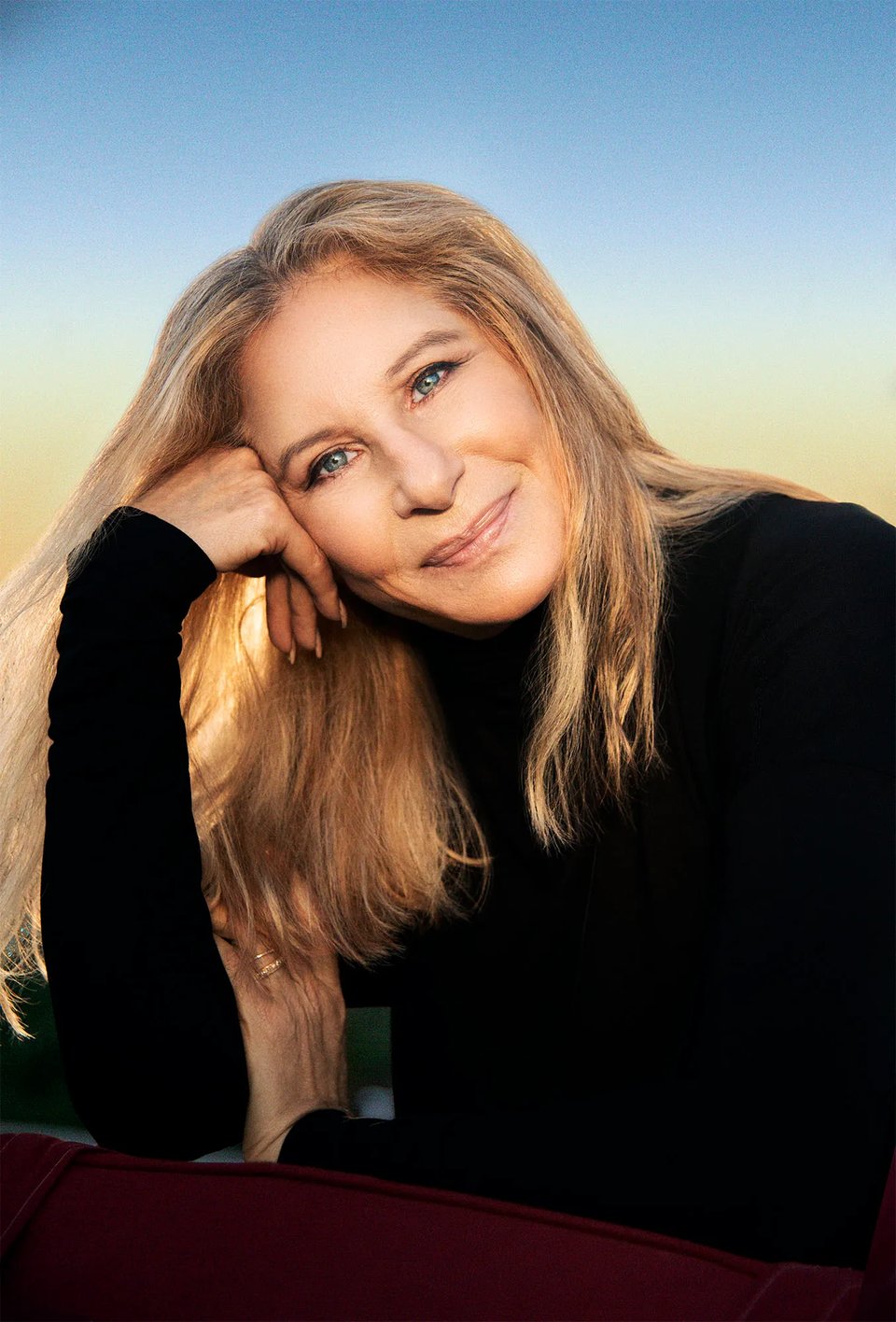
A portrait by Pari Dukovic from 2018.
“Sydney and I were trying to make the sequel for 20 years at least. Redford never wanted to make the sequel,” she says. Arthur Laurents and David Rayfiel, who were writers on The Way We Were, both took a stab at it. So did someone else whose name she can’t remember. “None of them were good,” she tells me. So she did it herself. But now, she fears, it’s too late. She couldn’t bear anyone else playing those characters. It had to be her and Bob.
I venture, cautiously—aware I might be committing blasphemy—that these days the way to get this sequel made with Redford would be to de-age him. Streisand lights up. “Oh! That’s funny,” she says. “It’s actually a good idea.” It occurs to me that a director who cloned her dog would not hesitate to embrace all available technologies. Plus, she’d seen the first 10 minutes of the new Indiana Jones movie and thought they did a great job with Harrison Ford. We move on to other topics, and I even get to see the Barbra Streisand rose in the garden, but as we say our goodbyes, she circles back to the subject of the sequel. She’s going to call Redford and see what he thinks. (BY RADHIKA JONES,Vanity Fair).
________________________________

________________________________